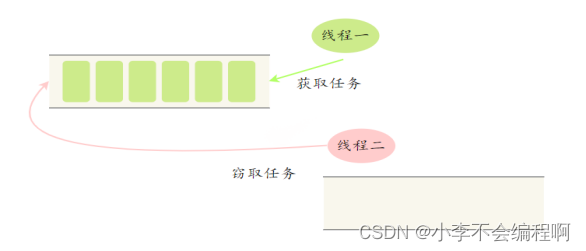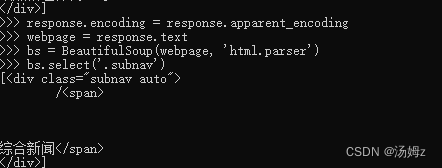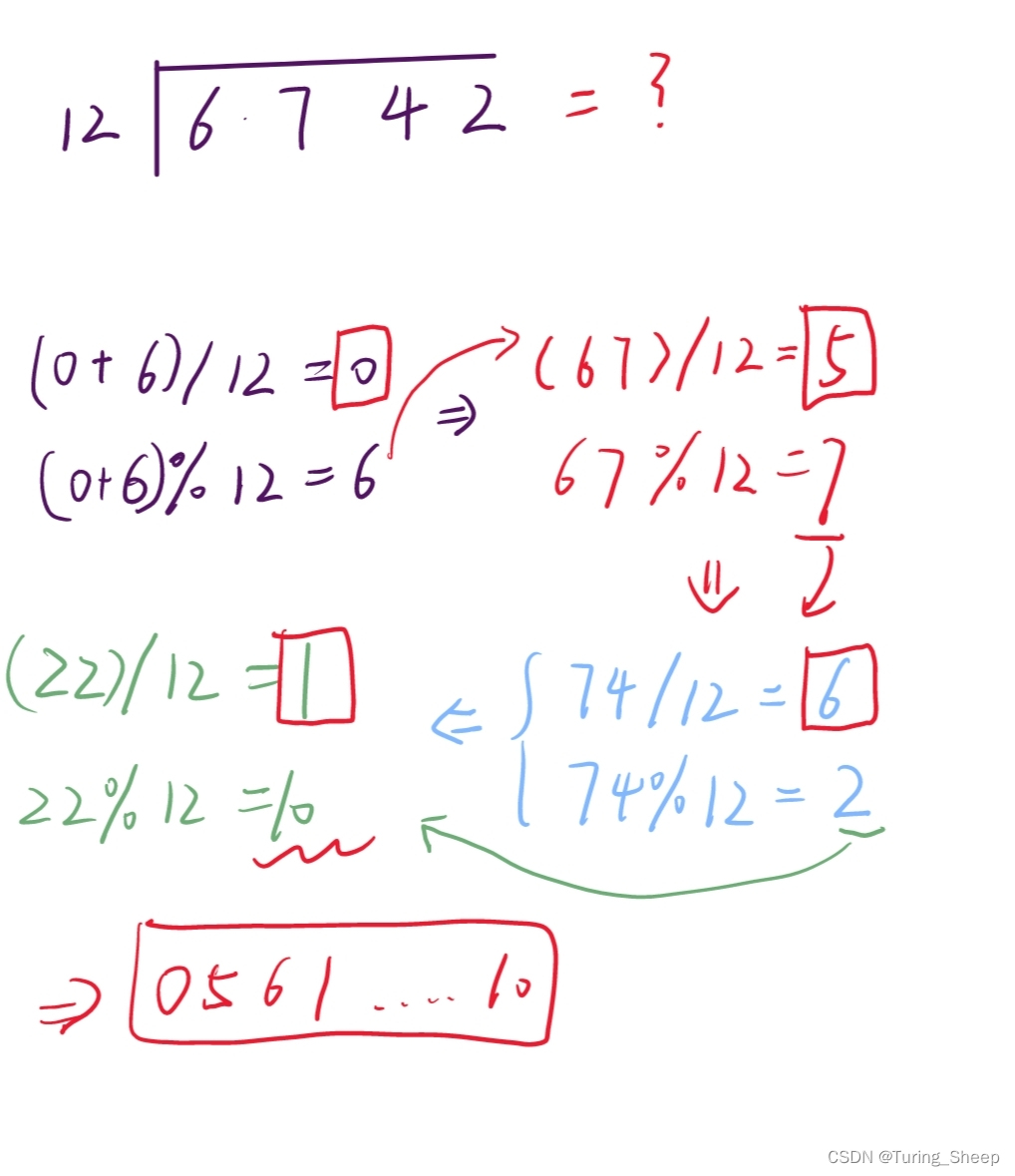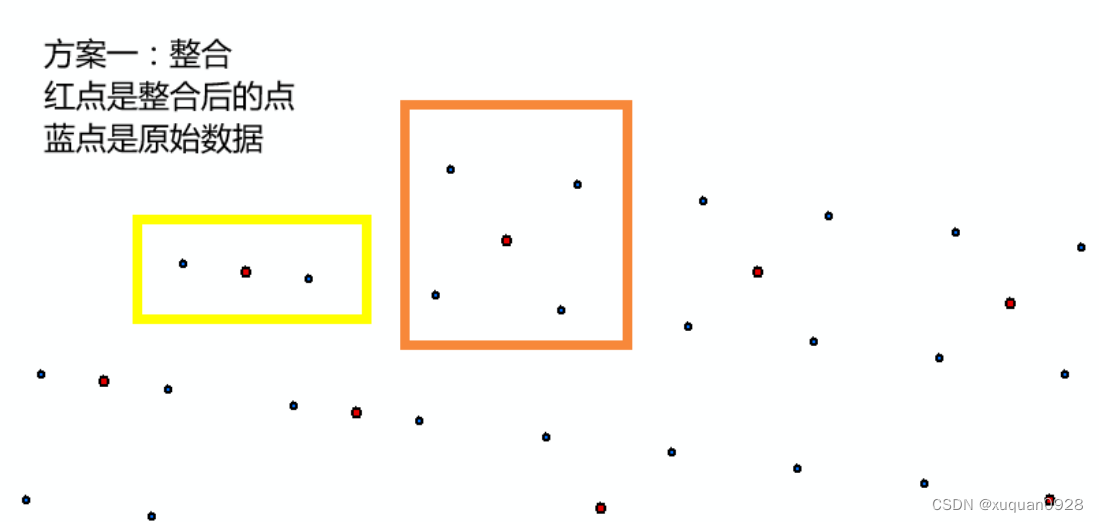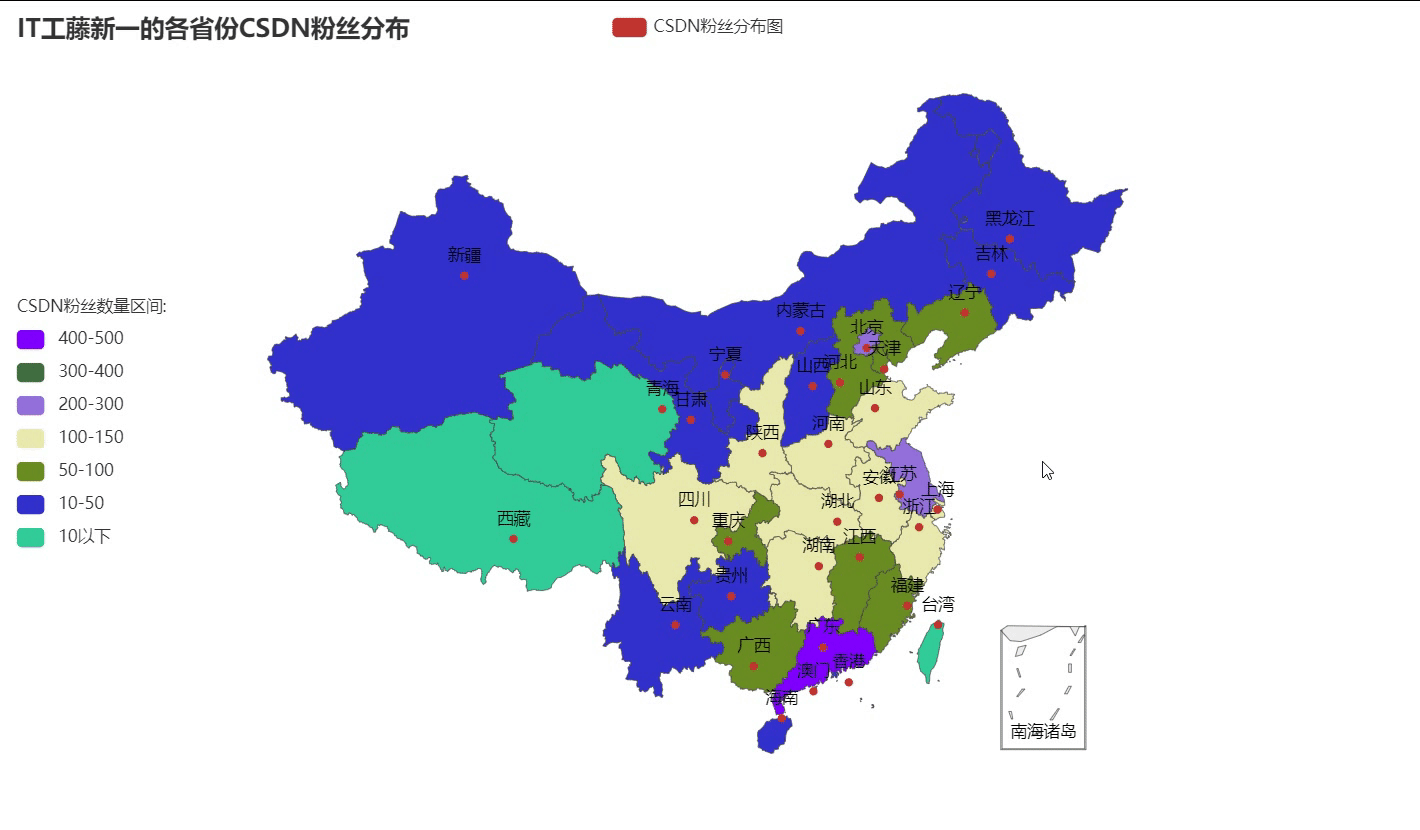文章目录
- 四、Neural Network 神经网络
- 1、Containers - Module
- 2、Convolution Layers - functional.conv2d
- 2.1 stride
- 2.2 padding
- 3、Convolution Layers - Conv2d
- 3.1 in_channels out_channels
- 4、Pooling layers - MaxPool2d
- 4.1 ceil_mode
- 4.2 TensorBoard
- 5、Non-linear Activations
- 5.1 ReLU
- 5.2 Sigmoid
- 6、Linear Layers - Linear
- 6.1 flatten
- 7、CIFAR 10 Model and Sequential
- 8、Loss Functions
- 8.1 L1Loss
- 8.2 MSELoss
- 8.3 CrossEntropyLoss
- 8.4 Sequential
- 8.5 backward
四、Neural Network 神经网络
参考文档:https://pytorch.org/docs/stable/nn.html

1、Containers - Module
参考文档:https://pytorch.org/docs/stable/generated/torch.nn.Module.html#torch.nn.Module

import torch
from torch import nn
class Tudui(nn.Module):
def __init__(self):
super().__init__()
def forward(self, input):
output = input + 1
return output
tudui = Tudui()
x = torch.tensor(1.0)
output = tudui(x)
print(output)
tensor(2.)
2、Convolution Layers - functional.conv2d
参考文档:https://pytorch.org/docs/stable/generated/torch.nn.functional.conv2d.html#torch.nn.functional.conv2d

2.1 stride

import torch
import torch.nn.functional as F
input = torch.tensor([
[1, 2, 0, 3, 1],
[0, 1, 2, 3, 1],
[1, 2, 1, 0, 0],
[5, 2, 3, 1, 1],
[2, 1, 0, 1, 1]
])
kernel = torch.tensor([
[1, 2, 1],
[0, 1, 0],
[2, 1, 0]
])
input = torch.reshape(input, (1, 1, 5, 5)) # torch.Size([1, 1, 5, 5])
kernel = torch.reshape(kernel, (1, 1, 3, 3)) # torch.Size([1, 1, 3, 3])
output1 = F.conv2d(input, kernel, stride=1)
print(output1)
output2 = F.conv2d(input, kernel, stride=2)
print(output2)
tensor([[[[10, 12, 12],
[18, 16, 16],
[13, 9, 3]]]])
tensor([[[[10, 12],
[13, 3]]]])
2.2 padding

import torch
import torch.nn.functional as F
input = torch.tensor([
[1, 2, 0, 3, 1],
[0, 1, 2, 3, 1],
[1, 2, 1, 0, 0],
[5, 2, 3, 1, 1],
[2, 1, 0, 1, 1]
])
kernel = torch.tensor([
[1, 2, 1],
[0, 1, 0],
[2, 1, 0]
])
input = torch.reshape(input, (1, 1, 5, 5)) # torch.Size([1, 1, 5, 5])
kernel = torch.reshape(kernel, (1, 1, 3, 3)) # torch.Size([1, 1, 3, 3])
output1 = F.conv2d(input, kernel, stride=1, padding=1)
print(output1)
output2 = F.conv2d(input, kernel, stride=2, padding=1)
print(output2)
tensor([[[[ 1, 3, 4, 10, 8],
[ 5, 10, 12, 12, 6],
[ 7, 18, 16, 16, 8],
[11, 13, 9, 3, 4],
[14, 13, 9, 7, 4]]]])
tensor([[[[ 1, 4, 8],
[ 7, 16, 8],
[14, 9, 4]]]])
3、Convolution Layers - Conv2d
参考文档:https://pytorch.org/docs/stable/generated/torch.nn.Conv2d.html#torch.nn.Conv2d


动画实现:https://github.com/vdumoulin/conv_arithmetic/blob/master/README.md

3.1 in_channels out_channels

import torchvision
from torch import nn
from torch.nn import Conv2d
from torch.utils.data import DataLoader
dataset = torchvision.datasets.CIFAR10("../data", train=False, transform=torchvision.transforms.ToTensor(),
download=True)
dataloader = DataLoader(dataset, batch_size=64)
class Tudui(nn.Module):
def __init__(self):
super(Tudui, self).__init__()
self.conv1 = Conv2d(in_channels=3, out_channels=6, kernel_size=3, stride=1, padding=0)
def forward(self, x):
x = self.conv1(x)
return x
tudui = Tudui()
for data in dataloader:
imgs, targets = data
output = tudui(imgs)
print(imgs.shape)
print(output.shape)
Files already downloaded and verified
torch.Size([64, 3, 32, 32]) # in_channels=3
torch.Size([64, 6, 30, 30]) # out_channels=6 卷积之后 32 -> 30
...
TensorBoard展示:
import torch
import torchvision
from torch import nn
from torch.nn import Conv2d
from torch.utils.data import DataLoader
from torch.utils.tensorboard import SummaryWriter
dataset = torchvision.datasets.CIFAR10("../data", train=False, transform=torchvision.transforms.ToTensor(),
download=True)
dataloader = DataLoader(dataset, batch_size=64)
class Tudui(nn.Module):
def __init__(self):
super(Tudui, self).__init__()
self.conv1 = Conv2d(in_channels=3, out_channels=6, kernel_size=3, stride=1, padding=0)
def forward(self, x):
x = self.conv1(x)
return x
tudui = Tudui()
writer = SummaryWriter("logs")
step = 0
for data in dataloader:
imgs, targets = data
output = tudui(imgs)
print(imgs.shape) # torch.Size([64, 3, 32, 32])
print(output.shape) # torch.Size([64, 6, 30, 30])
writer.add_images("input", imgs, step)
output = torch.reshape(output, (-1, 3, 30, 30)) # -> [xxx, 3, 30, 30]
writer.add_images("output", output, step)
print(output.shape) # torch.Size([128, 3, 30, 30])
step += 1
writer.close()

4、Pooling layers - MaxPool2d
参考文档:https://pytorch.org/docs/stable/generated/torch.nn.MaxPool2d.html#torch.nn.MaxPool2d

4.1 ceil_mode

import torch
from torch import nn
from torch.nn import MaxPool2d
input = torch.Tensor([
[1, 2, 0, 3, 1],
[0, 1, 2, 3, 1],
[1, 2, 1, 0, 0],
[5, 2, 3, 1, 1],
[2, 1, 0, 1, 1],
])
input = torch.reshape(input, (-1, 1, 5, 5)) # torch.Size([1, 1, 5, 5])
class Tudui(nn.Module):
def __init__(self):
super(Tudui, self).__init__()
self.maxpool1 = MaxPool2d(kernel_size=3, ceil_mode=True)
def forward(self, input):
output = self.maxpool1(input)
return output
tudui = Tudui()
output = tudui(input)
print(output)
tensor([[[[2., 3.],
[5., 1.]]]])
4.2 TensorBoard
import torchvision
from torch import nn
from torch.nn import MaxPool2d
from torch.utils.data import DataLoader
from torch.utils.tensorboard import SummaryWriter
dataset = torchvision.datasets.CIFAR10("../data", train=False, transform=torchvision.transforms.ToTensor(),
download=True)
dataloader = DataLoader(dataset, batch_size=64)
class Tudui(nn.Module):
def __init__(self):
super(Tudui, self).__init__()
self.maxpool1 = MaxPool2d(kernel_size=3, ceil_mode=False)
def forward(self, input):
output = self.maxpool1(input)
return output
tudui = Tudui()
writer = SummaryWriter("../logs")
step = 0
for data in dataloader:
imgs, targets = data
writer.add_images("input", imgs, step)
output = tudui(imgs)
writer.add_images("output", output, step)
step += 1
writer.close()

5、Non-linear Activations
5.1 ReLU
参考文档:https://pytorch.org/docs/stable/generated/torch.nn.ReLU.html#torch.nn.ReLU

inplace说明:
①input = -1 – ReLU(input, inplace = True) – input = 0
②input = -1 – output = ReLU(input, inplace = True) – input = -1 output = 0
import torch
from torch import nn
from torch.nn import ReLU
input = torch.Tensor([[1, -0.5], [-1, 3]]) # torch.Size([2, 2])
input = torch.reshape(input, (-1, 1, 2, 2)) # torch.Size([1, 1, 2, 2])
class Tudui(nn.Module):
def __init__(self):
super(Tudui, self).__init__()
self.relu1 = ReLU()
def forward(self, input):
output = self.relu1(input)
return output
tudui = Tudui()
output = tudui(input)
print(output) # torch.Size([1, 1, 2, 2])
tensor([[[[1., 0.],
[0., 3.]]]])
5.2 Sigmoid
参考文档:https://pytorch.org/docs/stable/generated/torch.nn.Sigmoid.html#torch.nn.Sigmoid

import torchvision
from torch import nn
from torch.nn import ReLU, Sigmoid
from torch.utils.data import DataLoader
from torch.utils.tensorboard import SummaryWriter
dataset = torchvision.datasets.CIFAR10("../data", train=False, transform=torchvision.transforms.ToTensor(),
download=True)
dataloader = DataLoader(dataset, batch_size=64)
class Tudui(nn.Module):
def __init__(self):
super(Tudui, self).__init__()
self.sigmoid1 = Sigmoid()
def forward(self, input):
output = self.sigmoid1(input)
return output
tudui = Tudui()
writer = SummaryWriter("../logs")
step = 0
for data in dataloader:
imgs, targets = data
writer.add_images("input", imgs, global_step=step)
output = tudui(imgs)
writer.add_images("output", output, global_step=step)
step += 1
writer.close()

6、Linear Layers - Linear

参考文档:https://pytorch.org/docs/stable/generated/torch.nn.Linear.html#torch.nn.Linear

import torch
import torchvision
from torch import nn
from torch.nn import Linear
from torch.utils.data import DataLoader
dataset = torchvision.datasets.CIFAR10("../data", train=False, transform=torchvision.transforms.ToTensor(),
download=True)
dataloader = DataLoader(dataset, batch_size=64)
class Tudui(nn.Module):
def __init__(self):
super(Tudui, self).__init__()
self.liner1 = Linear(in_features=196608, out_features=10)
def forward(self, input):
output = self.liner1(input)
return output
tudui = Tudui()
for data in dataloader:
imgs, targets = data
print(imgs.shape) # torch.Size([64, 3, 32, 32])
output = torch.reshape(imgs, (1, 1, 1, -1))
print(output.shape) # torch.Size([1, 1, 1, 196608])
output = tudui(output)
print(output.shape) # torch.Size([1, 1, 1, 10])
Files already downloaded and verified
torch.Size([64, 3, 32, 32])
torch.Size([1, 1, 1, 196608])
torch.Size([1, 1, 1, 10])
...
6.1 flatten
参考文档:https://pytorch.org/docs/stable/generated/torch.flatten.html?highlight=flatten#torch.flatten

output = torch.reshape(imgs, (1, 1, 1, -1))
print(output.shape) # torch.Size([1, 1, 1, 196608])
改为
output = torch.flatten(imgs)
print(output.shape) # torch.Size([196608]) output --> torch.Size([10])
7、CIFAR 10 Model and Sequential
CIFAR 10:https://www.cs.toronto.edu/~kriz/cifar.html

import torch
from torch import nn
from torch.nn import Conv2d, MaxPool2d, Flatten, Linear
class Tudui(nn.Module):
def __init__(self):
super(Tudui, self).__init__()
self.conv1 = Conv2d(in_channels=3, out_channels=32, kernel_size=5, padding=2)
self.maxpool1 = MaxPool2d(kernel_size=2)
self.conv2 = Conv2d(in_channels=32, out_channels=32, kernel_size=5, padding=2)
self.maxpool2 = MaxPool2d(kernel_size=2)
self.conv3 = Conv2d(in_channels=32, out_channels=64, kernel_size=5, padding=2)
self.maxpool3 = MaxPool2d(kernel_size=2)
self.flatten = Flatten()
self.linear1 = Linear(1024, 64)
self.linear2 = Linear(64, 10)
def forward(self, x):
x = self.conv1(x)
x = self.maxpool1(x)
x = self.conv2(x)
x = self.maxpool2(x)
x = self.conv3(x)
x = self.maxpool3(x)
x = self.flatten(x)
x = self.linear1(x)
x = self.linear2(x)
return x
tudui = Tudui()
print(tudui)
input = torch.ones((64, 3, 32, 32))
output = tudui(input)
print(output.shape)
Tudui(
(conv1): Conv2d(3, 32, kernel_size=(5, 5), stride=(1, 1), padding=(2, 2))
(maxpool1): MaxPool2d(kernel_size=2, stride=2, padding=0, dilation=1, ceil_mode=False)
(conv2): Conv2d(32, 32, kernel_size=(5, 5), stride=(1, 1), padding=(2, 2))
(maxpool2): MaxPool2d(kernel_size=2, stride=2, padding=0, dilation=1, ceil_mode=False)
(conv3): Conv2d(32, 64, kernel_size=(5, 5), stride=(1, 1), padding=(2, 2))
(maxpool3): MaxPool2d(kernel_size=2, stride=2, padding=0, dilation=1, ceil_mode=False)
(flatten): Flatten(start_dim=1, end_dim=-1)
(linear1): Linear(in_features=1024, out_features=64, bias=True)
(linear2): Linear(in_features=64, out_features=10, bias=True)
)
torch.Size([64, 10])
Sequential:https://pytorch.org/docs/stable/generated/torch.nn.Sequential.html#torch.nn.Sequential

import torch
from torch import nn
from torch.nn import Conv2d, MaxPool2d, Flatten, Linear, Sequential
from torch.utils.tensorboard import SummaryWriter
class Tudui(nn.Module):
def __init__(self):
super(Tudui, self).__init__()
self.model1 = Sequential(
Conv2d(3, 32, 5, padding=2),
MaxPool2d(2),
Conv2d(32, 32, 5, padding=2),
MaxPool2d(2),
Conv2d(32, 64, 5, padding=2),
MaxPool2d(2),
Flatten(),
Linear(1024, 64),
Linear(64, 10)
)
def forward(self, x):
x = self.model1(x)
return x
tudui = Tudui()
print(tudui)
input = torch.ones((64, 3, 32, 32))
output = tudui(input)
print(output.shape)
writer = SummaryWriter("../logs")
writer.add_graph(tudui, input)
writer.close()
Tudui(
(model1): Sequential(
(0): Conv2d(3, 32, kernel_size=(5, 5), stride=(1, 1), padding=(2, 2))
(1): MaxPool2d(kernel_size=2, stride=2, padding=0, dilation=1, ceil_mode=False)
(2): Conv2d(32, 32, kernel_size=(5, 5), stride=(1, 1), padding=(2, 2))
(3): MaxPool2d(kernel_size=2, stride=2, padding=0, dilation=1, ceil_mode=False)
(4): Conv2d(32, 64, kernel_size=(5, 5), stride=(1, 1), padding=(2, 2))
(5): MaxPool2d(kernel_size=2, stride=2, padding=0, dilation=1, ceil_mode=False)
(6): Flatten(start_dim=1, end_dim=-1)
(7): Linear(in_features=1024, out_features=64, bias=True)
(8): Linear(in_features=64, out_features=10, bias=True)
)
)
torch.Size([64, 10])

8、Loss Functions
8.1 L1Loss
参考文档:https://pytorch.org/docs/stable/generated/torch.nn.L1Loss.html#torch.nn.L1Loss

import torch
from torch.nn import L1Loss
input = torch.tensor([1, 2, 3], dtype=torch.float32) # torch.Size([3])
target = torch.tensor([1, 2, 5], dtype=torch.float32) # torch.Size([3])
input = torch.reshape(input, (1, 1, 1, 3)) # torch.Size([1, 1, 1, 3])
target = torch.reshape(target, (1, 1, 1, 3)) # torch.Size([1, 1, 1, 3])
loss1 = L1Loss(reduction='mean') # 默认为mean
result = loss1(input, target)
print(result)
loss2 = L1Loss(reduction='sum') # sum
result = loss2(input, target)
print(result)
tensor(0.6667)
tensor(2.)
8.2 MSELoss
参考文档:https://pytorch.org/docs/stable/generated/torch.nn.MSELoss.html#torch.nn.MSELoss

import torch
from torch.nn import MSELoss
input = torch.tensor([1, 2, 3], dtype=torch.float32)
target = torch.tensor([1, 2, 5], dtype=torch.float32)
input = torch.reshape(input, (1, 1, 1, 3))
target = torch.reshape(target, (1, 1, 1, 3))
loss = MSELoss()
result = loss(input, target)
print(result)
tensor(1.3333)
8.3 CrossEntropyLoss
参考文档:https://pytorch.org/docs/stable/generated/torch.nn.CrossEntropyLoss.html#torch.nn.CrossEntropyLoss

计算公式:

import torch
from torch.nn import CrossEntropyLoss
input = torch.tensor([0.1, 0.2, 0.3])
target = torch.tensor([1])
input = torch.reshape(input, (1, 3))
cross = CrossEntropyLoss()
result = cross(input, target)
print(result)
tensor(1.1019)
8.4 Sequential
import torchvision
from torch import nn
from torch.nn import Sequential, Conv2d, MaxPool2d, Flatten, Linear
from torch.utils.data import DataLoader
dataset = torchvision.datasets.CIFAR10("../data", train=False, transform=torchvision.transforms.ToTensor(),
download=True)
dataloader = DataLoader(dataset, batch_size=1)
class Tudui(nn.Module):
def __init__(self):
super(Tudui, self).__init__()
self.model1 = Sequential(
Conv2d(3, 32, 5, padding=2),
MaxPool2d(2),
Conv2d(32, 32, 5, padding=2),
MaxPool2d(2),
Conv2d(32, 64, 5, padding=2),
MaxPool2d(2),
Flatten(),
Linear(1024, 64),
Linear(64, 10)
)
def forward(self, x):
x = self.model1(x)
return x
tudui = Tudui()
for data in dataloader:
imgs, targets = data
output = tudui(imgs)
print(output)
print(targets)
Files already downloaded and verified
tensor([[-0.0715, 0.0221, -0.0562, -0.0901, 0.0627, -0.0606, 0.0137, 0.0783,
-0.0951, -0.1070]], grad_fn=<AddmmBackward0>)
tensor([3])
tensor([[-0.0715, 0.0304, -0.0729, -0.0767, 0.0554, -0.0834, -0.0089, 0.0624,
-0.0777, -0.0848]], grad_fn=<AddmmBackward0>)
tensor([8])
...
加入Loss Functions:
import torchvision
from torch import nn
from torch.nn import Sequential, Conv2d, MaxPool2d, Flatten, Linear, CrossEntropyLoss
from torch.utils.data import DataLoader
dataset = torchvision.datasets.CIFAR10("../data", train=False, transform=torchvision.transforms.ToTensor(),
download=True)
dataloader = DataLoader(dataset, batch_size=1)
class Tudui(nn.Module):
def __init__(self):
super(Tudui, self).__init__()
self.model1 = Sequential(
Conv2d(3, 32, 5, padding=2),
MaxPool2d(2),
Conv2d(32, 32, 5, padding=2),
MaxPool2d(2),
Conv2d(32, 64, 5, padding=2),
MaxPool2d(2),
Flatten(),
Linear(1024, 64),
Linear(64, 10)
)
def forward(self, x):
x = self.model1(x)
return x
loss = CrossEntropyLoss()
tudui = Tudui()
for data in dataloader:
imgs, targets = data
output = tudui(imgs)
result_loss = loss(output, targets)
print(result_loss)
Files already downloaded and verified
tensor(2.3437, grad_fn=<NllLossBackward0>)
tensor(2.3600, grad_fn=<NllLossBackward0>)
tensor(2.3680, grad_fn=<NllLossBackward0>)
...
8.5 backward
import torchvision
from torch import nn
from torch.nn import Sequential, Conv2d, MaxPool2d, Flatten, Linear, CrossEntropyLoss
from torch.utils.data import DataLoader
dataset = torchvision.datasets.CIFAR10("../data", train=False, transform=torchvision.transforms.ToTensor(),
download=True)
dataloader = DataLoader(dataset, batch_size=1)
class Tudui(nn.Module):
def __init__(self):
super(Tudui, self).__init__()
self.model1 = Sequential(
Conv2d(3, 32, 5, padding=2),
MaxPool2d(2),
Conv2d(32, 32, 5, padding=2),
MaxPool2d(2),
Conv2d(32, 64, 5, padding=2),
MaxPool2d(2),
Flatten(),
Linear(1024, 64),
Linear(64, 10)
)
def forward(self, x):
x = self.model1(x)
return x
loss = CrossEntropyLoss()
tudui = Tudui()
for data in dataloader:
imgs, targets = data
output = tudui(imgs)
result_loss = loss(output, targets)
result_loss.backward() # 反向传播
print("OK")


